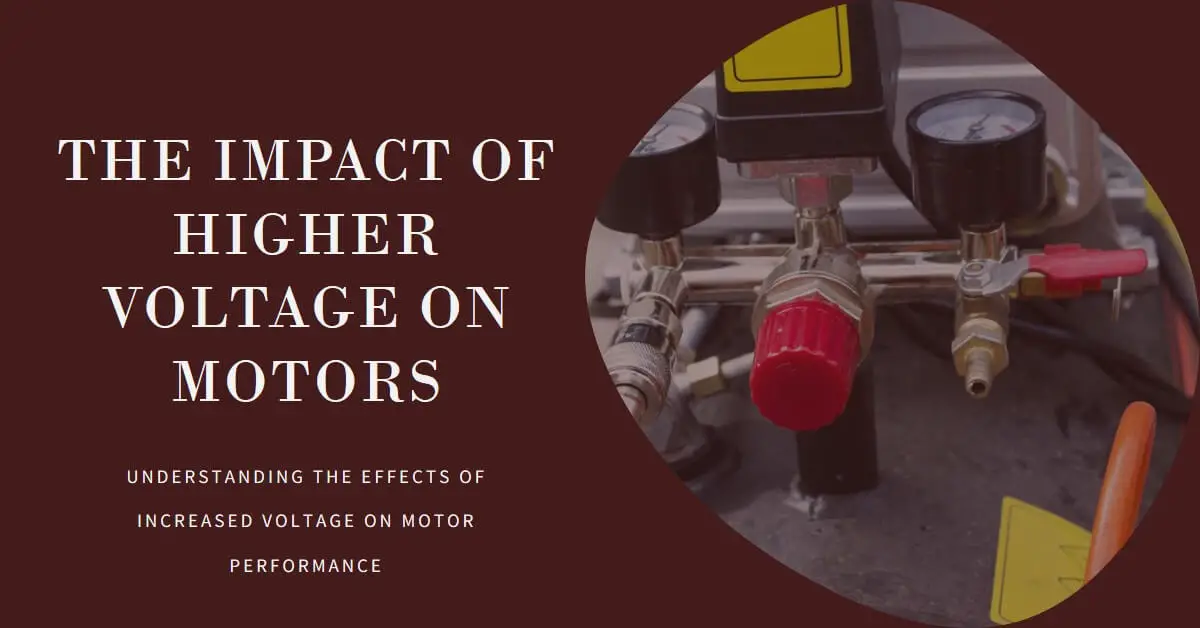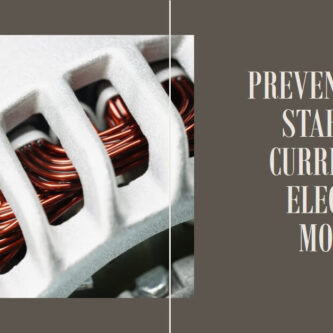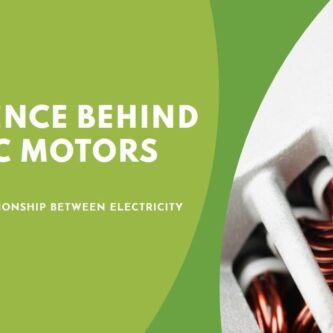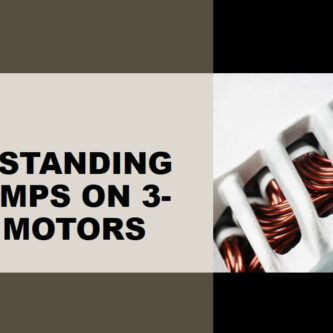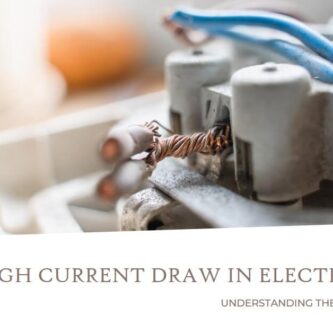Image: “Article Feature Image” by Bing is licensed under CC BY-NC-SA 4.0. Source: Bing Graphic Art. License: CC BY-NC-SA 4.0.
The motor operation relies heavily on voltage to function efficiently and effectively. Understanding the effects of increased voltage on motors is crucial for optimizing their performance and avoiding potential issues.
While increased voltage can indeed enhance motor performance, it is important to be aware that excessive voltage can also pose risks to motor operation.
In this article, we will explore the various impacts of increased voltage on motor operation, considering factors such as torque production, speed, efficiency, temperature rise, insulation stress, bearing wear, power consumption, and safety considerations.
Basics of Motor Operation
Motor components, including the stator and rotor, work in harmony to convert electrical energy into mechanical motion.
Voltage plays a vital role in this process by providing the necessary electromotive force to drive the motor.
It is essential to grasp the fundamentals of motor operation and voltage ratings to comprehend the effects of increased voltage accurately.
Effects of Increased Voltage on Motor Operation
While increased voltage can indeed enhance motor performance, it is important to be aware that excessive voltage can also pose risks to motor operation.
Here’s a more detailed explanation of the potential negative effects of increased voltage on motors:
- Motor Damage: Excessive voltage can put additional stress on motor components, such as windings, bearings, and insulation. This increased stress may lead to accelerated wear and tear, ultimately resulting in motor damage and reduced lifespan.
- Burnout: If the voltage surpasses the motor’s design limits, it can cause excessive heat buildup within the motor. This can lead to insulation breakdown, overheating, and even motor burnout. Burnout occurs when the motor becomes irreparably damaged due to extreme heat and electrical failures.
To prevent motor damage and burnout, it is crucial to operate motors within their specified voltage ratings.
Manufacturers provide voltage limits to ensure safe and optimal operation. Operating motors at voltages higher than their rated values can exceed the motor’s capacity to handle the increased electrical load, leading to potential hazards and premature failure.
Let’s check out cons and pros of increased voltage on electric motors:
Increased Torque Production
- Explanation of Torque: Torque is the rotational force produced by a motor. It determines the motor’s ability to perform work and overcome resistance.
- Relationship between Voltage and Torque: Voltage and torque exhibit a linear relationship. As voltage increases, so does torque production.
- Impact of Increased Voltage on Torque Production: Higher voltage results in increased torque, enabling motors to handle heavier loads or accelerate faster.
Speed and RPM
- Relationship between Voltage and Motor Speed: Voltage affects motor speed directly. A higher voltage generally leads to an increase in motor speed.
- Impact of Increased Voltage on RPM: With increased voltage, the motor’s rotational speed, measured in revolutions per minute (RPM), tends to rise.
- Considerations for Controlling Motor Speed: While higher voltage can boost motor speed, it is important to ensure that the speed remains within desired limits. Speed control mechanisms should be employed when precise speed regulation is required.
Motor Efficiency
- Factors Affecting Motor Efficiency: Several factors influence motor efficiency, including voltage, current, power losses, and mechanical losses.
- Impact of Increased Voltage on Motor Efficiency: Increased voltage can enhance motor efficiency by minimizing voltage drop across the windings and reducing resistive losses.
- Optimal Voltage Range for Motor Efficiency: While higher voltage can improve efficiency, it is crucial to operating motors within their rated voltage range to prevent overheating and other adverse effects.
Temperature Rise and Overheating
- Understanding Temperature Rise in Motors: During operation, motors generate heat, resulting in temperature rise. Excessive temperature rise can lead to motor damage and reduced lifespan.
- Effects of Increased Voltage on Temperature Rise: Higher voltage can elevate the temperature rise in motors, increasing the risk of overheating and potential failure.
- Mitigating Overheating Issues: Proper ventilation, adequate cooling systems, and regular maintenance are essential to prevent overheating. Temperature monitoring devices can also help identify potential issues early on.
Insulation Stress and Breakdown
- Importance of Motor Insulation: Motor windings are insulated to protect against electrical shorts and ensure reliable operation.
- Impact of Increased Voltage on Insulation Stress: Higher voltage levels increase the stress on motor insulation, potentially leading to insulation breakdown and electrical failures.
- Preventing Insulation Breakdown: Regular insulation testing, ensuring proper grounding, and using motors within their specified voltage ratings are crucial in preventing insulation breakdown.
Bearing Wear and Tear
- Role of Bearings in Motor Operation: Bearings support motor shafts, enabling smooth rotation. They are critical for maintaining motor alignment and reducing friction.
- Effects of Increased Voltage on Bearing Wear: Higher voltage can lead to increased bearing wear and tear due to higher speeds and increased forces.
- Maintenance and Lubrication Considerations: Regular bearing maintenance, including lubrication and proper alignment, is essential to minimize wear and extend bearing life.
Power Consumption and Energy Costs
- Relationship between Voltage and Power Consumption: Voltage has a direct impact on power consumption in motors. Higher voltage generally results in increased power consumption.
- Impact of Increased Voltage on Energy Costs: Operating motors at higher voltage levels can lead to higher energy costs, especially if the motor is not operating at optimal efficiency.
- Balancing Voltage and Energy Efficiency: Optimizing motor voltage within the manufacturer’s recommended range can help strike a balance between performance and energy efficiency, minimizing operating costs.
Read also my article: Power Surge: Can Overvoltage Spell Disaster for Motors?
Safety Considerations
Electrical Safety Measures
- Understanding Electrical Hazards: Motors operating at higher voltages pose greater electrical hazards. Understanding the risks associated with electrical shocks and arcs is crucial.
- Safety Precautions for High Voltage Motors: Implementing safety measures, such as proper insulation, grounding, and protective equipment, is vital for minimizing the risk of electrical accidents.
- Importance of Proper Grounding: Proper grounding of motors ensures the safe dissipation of electrical faults and protects personnel and equipment.
Overvoltage Protection Devices
- Overview of Overvoltage Protection: Overvoltage protection devices safeguard motors from voltage spikes and transients.
- Types of Overvoltage Protection Devices: Surge protectors, voltage regulators, and voltage monitoring devices are common types of overvoltage protection devices.
- Installation and Benefits: Installing overvoltage protection devices can prevent motor damage, enhance operational safety, and increase the lifespan of motor equipment.
Conclusion
Understanding the effects of increased voltage on motor operation is crucial for optimizing motor performance, efficiency, and safety.
By considering the impacts on torque production, speed, efficiency, temperature rise, insulation stress, bearing wear, and power consumption, and implementing appropriate safety measures, operators can ensure reliable and efficient motor operation.
Regular maintenance and monitoring play a vital role in extending motor lifespan and minimizing downtime.
By striking a balance between voltage optimization and energy efficiency, operators can achieve optimal motor performance while reducing energy costs.
you work With Electricity! Don’t leave empty-handed!
Looking to stay ahead of the game in the world of electrical engineering? Subscribe to my YouTube channel and gain access to exclusive content you won’t find anywhere else!
The staff I recommend (Amazon Affiliate Links to products I believe are high quality):
- Economy 120 Volt/60Hz AC Power Source – Step-Down Voltage & Frequency Converters 1800W
- UNI-T Digital Multimeter Tester UT139C
- 50-Amp Extension Cord for RV “100ft”
- Voltage Stabilizer 110/220v
- Hair Dryer “best selling“
- TOSHIBA EM131A5C-BS Countertop Microwave Ovens
Disclaimer: This contains affiliate links to Amazon products. I may earn a commission for purchases made through these links.

